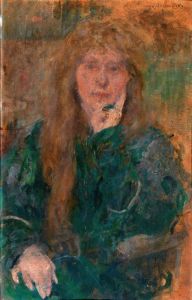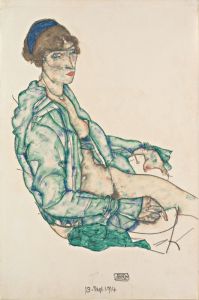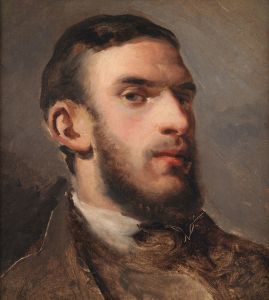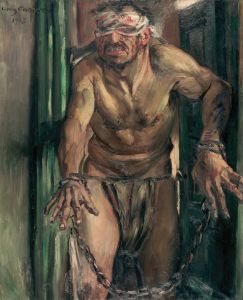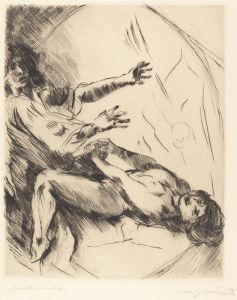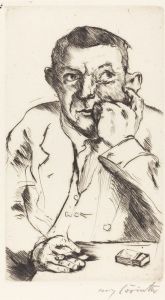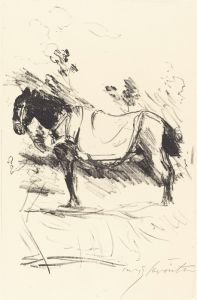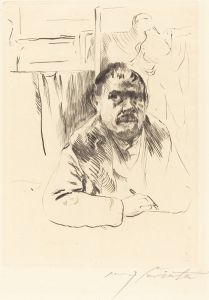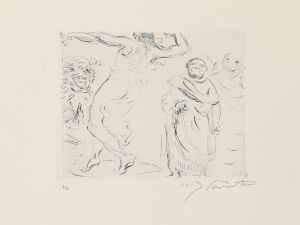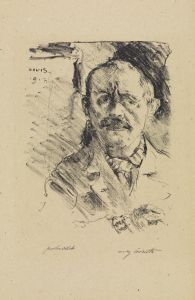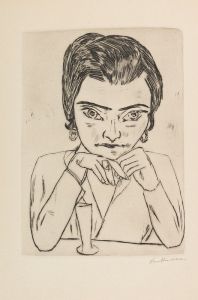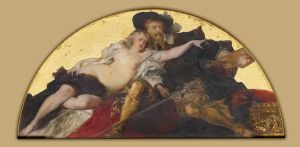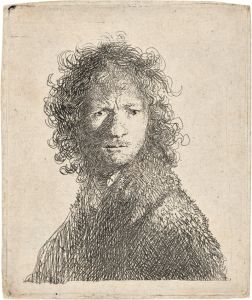
Selbstbildnis
A hand-painted replica of Lovis Corinth’s masterpiece Selbstbildnis, meticulously crafted by professional artists to capture the true essence of the original. Each piece is created with museum-quality canvas and rare mineral pigments, carefully painted by experienced artists with delicate brushstrokes and rich, layered colors to perfectly recreate the texture of the original artwork. Unlike machine-printed reproductions, this hand-painted version brings the painting to life, infused with the artist’s emotions and skill in every stroke. Whether for personal collection or home decoration, it instantly elevates the artistic atmosphere of any space.
Lovis Corinth was a prominent German painter and printmaker, known for his significant contributions to the transition from Impressionism to Expressionism in the late 19th and early 20th centuries. One of his notable works is "Selbstbildnis," which translates to "Self-Portrait" in English. Corinth's self-portraits are an essential part of his oeuvre, offering insight into his evolving style and personal reflections throughout his career.
Lovis Corinth was born on July 21, 1858, in Tapiau, East Prussia, now Gvardeysk, Russia. He studied art in Königsberg, Munich, and Paris, where he was influenced by the Impressionists and the academic style of painting. Corinth's early works were characterized by a naturalistic approach, but he gradually adopted a more expressive style, marked by bold brushwork and vibrant colors.
The "Selbstbildnis" paintings by Corinth are significant as they document his artistic journey and personal life. Over the years, Corinth created numerous self-portraits, each reflecting different phases of his life and artistic development. These works are not only technical exercises but also introspective explorations of his identity and emotions.
One of the most notable aspects of Corinth's self-portraits is how they capture his response to personal challenges. In 1911, Corinth suffered a stroke that left him partially paralyzed on his left side. This event had a profound impact on his life and work. Despite the physical limitations, Corinth continued to paint, and his style became even more vigorous and expressive. His self-portraits from this period reveal a raw intensity and emotional depth, as he confronted his own vulnerability and resilience.
Corinth's self-portraits are characterized by their dynamic composition and expressive use of color and brushwork. He often depicted himself with a direct gaze, engaging the viewer with a sense of immediacy and presence. The backgrounds in these works are typically simple, focusing attention on the artist's face and expression. This approach allows viewers to connect with Corinth's introspective exploration of his own identity.
Throughout his career, Corinth was associated with the Berlin Secession, an art movement that sought to challenge the conservative art establishment in Germany. His work was well-received, and he became a leading figure in the German art scene. Corinth's self-portraits, along with his other works, played a significant role in shaping modern German art.
Lovis Corinth passed away on July 17, 1925, in Zandvoort, Netherlands. His legacy endures through his extensive body of work, which continues to be celebrated for its emotional intensity and technical mastery. Corinth's self-portraits, in particular, remain a testament to his ability to convey the complexities of the human experience through art.





